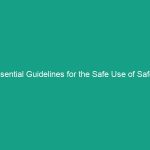Introduction
Good morning team! Today, we’re diving into a critical aspect of our Workplace Safety: Essential Confined Space Rescue Procedures. This Toolbox Talk aims to equip you with the knowledge you need to effectively plan for and execute rescue operations in confined spaces, ensuring we all return home safely at the end of the day.
Understanding these procedures is essential not only for your Safety but also for your coworkers. Confined spaces pose unique challenges and Hazards, which we’ll unpack together. Let’s get started!
Understanding Essential Confined Space Rescue Procedures
Essential Confined Space Rescue Procedures refer to the systematic methods and practices employed to safely rescue individuals who may become incapacitated or trapped in confined spaces. Confined spaces include areas like tanks, silos, and underground vaults that have limited entry and exit points, making them particularly dangerous.
The importance of these procedures cannot be overstated. Each year, numerous accidents occur in confined spaces, leading to serious injuries and fatalities. By understanding and practicing these procedures, we can minimize risks and enhance our response capabilities.
One common misconception is that rescue operations can be improvised in emergencies. However, without proper planning and practice, attempts to rescue someone in a confined space can lead to further injuries or fatalities. We must always be prepared.
Key Hazards, Risks, and Safety Considerations
Confined spaces present several hazards that can pose serious risks, including:
- Oxygen Deficiency: Levels may drop below safe thresholds, leading to unconsciousness or death.
- Toxic Atmospheres: Harmful gases or chemicals may be present, which can cause respiratory issues or poisoning.
- Engulfment: Materials like grain or liquids can surround and suffocate individuals.
- Physical Hazards: Equipment or machinery may pose risks, including falls or equipment malfunctions.
Ignoring these risks can have real-world consequences. For example, a lack of oxygen can lead to rapid incapacitation, and exposure to toxic substances can result in long-term health Effects. It’s crucial to recognize these dangers and implement proper Safety Measures.
Best Practices, Procedures, & Actionable Advice
Step-by-Step Safety Procedures
To ensure effective rescue operations, follow these essential procedures:
- Pre-Entry Planning: Before entering a confined space, conduct a thorough risk assessment. Identify potential hazards and develop a rescue plan that includes emergency contact information and the location of rescue equipment.
- Atmospheric Testing: Test the atmosphere for oxygen levels and toxic gases using calibrated equipment. Ensure that conditions are safe before proceeding.
- Use of Personal Protective Equipment (PPE): Equip all personnel with appropriate PPE, including harnesses, helmets, and respiratory protection, as required.
- Communication: Establish clear communication protocols. Ensure that personnel inside the confined space can communicate with those outside at all times.
- Rescue Equipment: Always have rescue equipment on hand, including harnesses, lifelines, and retrieval systems. Ensure that everyone knows how to use this equipment.
- Regular Drills: Conduct regular rescue drills to familiarize everyone with procedures and equipment. This practice ensures that all team members know their roles in an emergency.
Real-Life Example
Consider the case of a construction worker who collapsed inside a water tank due to low oxygen levels. Without a well-prepared rescue plan, the response team struggled to access him in time. A prompt response, with proper procedures in place, could have made all the difference.
Regulations, Standards, and Compliance
Compliance with safety Regulations is critical in confined space operations. Here are key Standards to be aware of:
- OSHA 29 CFR 1910.146: This regulation outlines the requirements for confined space entry, including atmospheric testing and rescue provisions.
- ANSI Z117.1: This standard provides guidelines for entering and working in confined spaces, including emergency procedures.
Following these regulations not only ensures compliance but also protects employees from potential hazards associated with confined spaces. Remember, safety is paramount, and adhering to these standards helps create a safer work Environment.
Employee Engagement & Discussion
Now that we’ve covered essential procedures and Best Practices, let’s engage in a discussion. Consider these questions:
- What confined space hazards have you encountered in your work?
- How can we improve our current rescue procedures?
- What additional resources or Training would help you feel more prepared for confined space operations?
Your input is invaluable, and sharing experiences can lead to better strategies and enhanced safety for all.
Conclusion & Key Takeaways
In conclusion, understanding and implementing Essential Confined Space Rescue Procedures is vital for maintaining safety in our work environment. Remember the key points:
- Always conduct pre-entry planning and risk assessments.
- Utilize proper atmospheric testing and PPE.
- Establish clear communication protocols and have rescue equipment available.
- Practice through regular drills to ensure readiness.
By prioritizing these Safety Measures, we can ensure a safer workplace for everyone. Thank you for your attention and commitment to safety. Let’s work together to keep each other safe!


